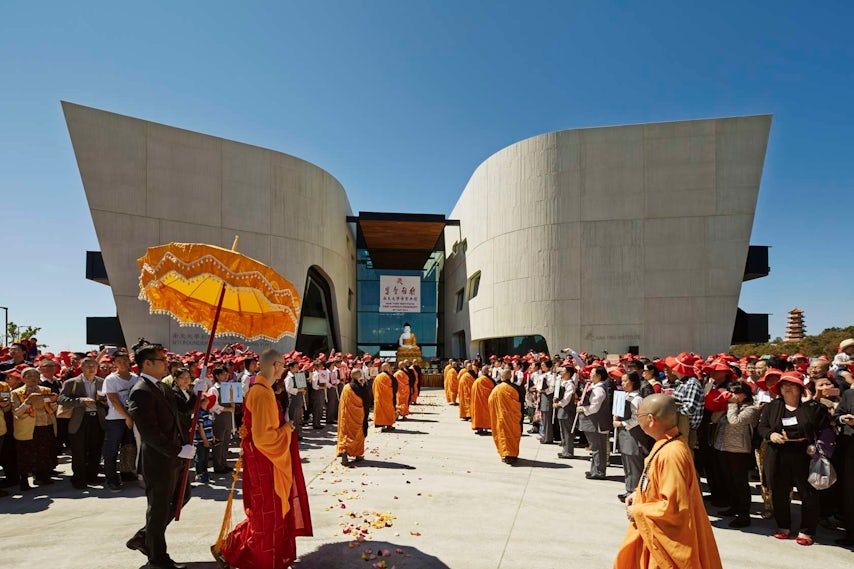While the practice of drinking tea has a long history in China, the nation’s relatively modern relationship with coffee dates back to the mid-nineteenth century, when China opened to foreign trade and Western missionaries and businessmen brought the bean to treaty ports. Among the industrialized treaty port cities, Shanghai became known as “Paris of the East” during the 1920s and 1930s, where cafes symbolized the country’s rapid industrialization and westernization. The cafes were short lived; nixed by Mao when the Communists rose to supremacy in 1949.
Coffee shops went through a 30-year hiatus, and began to reemerge in Shanghai in the 1980s. In the words of Jeffrey Wasserstrom from his book “All the Coffee in China,” the renewed presence of cafes in China indicates “both a novelty and a resumption of an old cosmopolitan trajectory that was interrupted for a time.”
This collection explores the burgeoning coffee culture in China. Leaving Starbucks and Chinese chains out of the picture, these projects represent the independent cafes that have emerged in recent years.
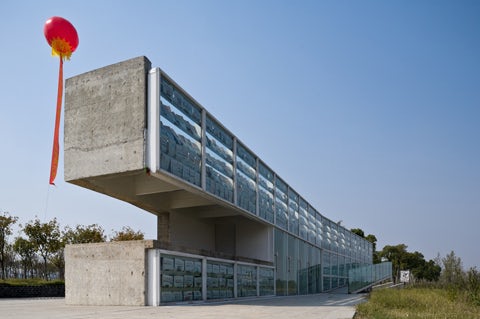
© Toshiko Mori Architect

© Toshiko Mori Architect

© Toshiko Mori Architect
Newspaper Cafe by Toshiko Mori Architect, Jinhua, China
Sandwiched in between Jinhua City and Aiqing Cultural Park, the vertical reading room in Newspaper Cafe offers hundreds of daily newspapers printed in China. Space within the façade is used to display more than 1000 pieces of printed matter; new issues replace yesterday’s, changing the subject matter and the structure itself everyday.



Grenadier Cafe by Oneday Architecture Studio, Beijing, China
Tucked into a dark graffitied alley of the Dianmen Hutong, this project features a petite white-walled room fit for film screenings. Outside, a hidden stairway leads to completely private rooftop seating flanked by the cobbled rooftops of residential housing.

© Precht

© Precht

© Precht
Home Cafe by penda, Tianjin, China
Installed in the gridded metal framework around the perimeter of this cafe, wooden box shelves and planters were created with the idea of “spaces to breathe in heavily polluted areas of China.” Developed as a design concept that could be applied to every branch of the Home Cafe, the modular furnishing system incorporate air-purifying plants and herbs that create fragrances to complement the smell of brewing coffee.
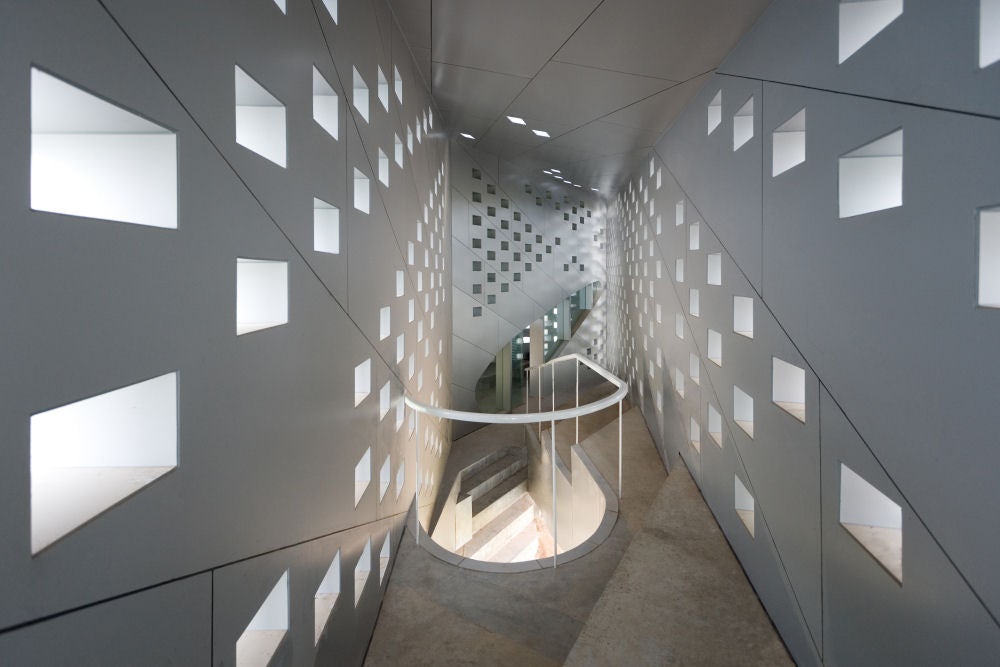
© Michael Maltzan Architecture

© Michael Maltzan Architecture

© Michael Maltzan Architecture
BookBar by Michael Maltzan Architecture, Jinhua City, China
Several of Confucius’ seminal texts were hidden in a well when the emperor ordered all Confucian writings to be burned in the 3rd century B.C.E. They weren’t discovered until nearly four centuries later. The project’s concept expands on the historical confluence between books and architecture, featuring a space for learning, a bookstore and cafe, and a series of terraces.



Cafe 27 by Four O Nine, Beijing, China
A retrofit of an existing glass greenhouse structure, this cafe was conceived as an inside-out garden pavilion. The interior and exterior are connected through a series of pivoting doors, further blurring the boundary between the indoor and outdoor experience at the cafe.

© LATITUDE
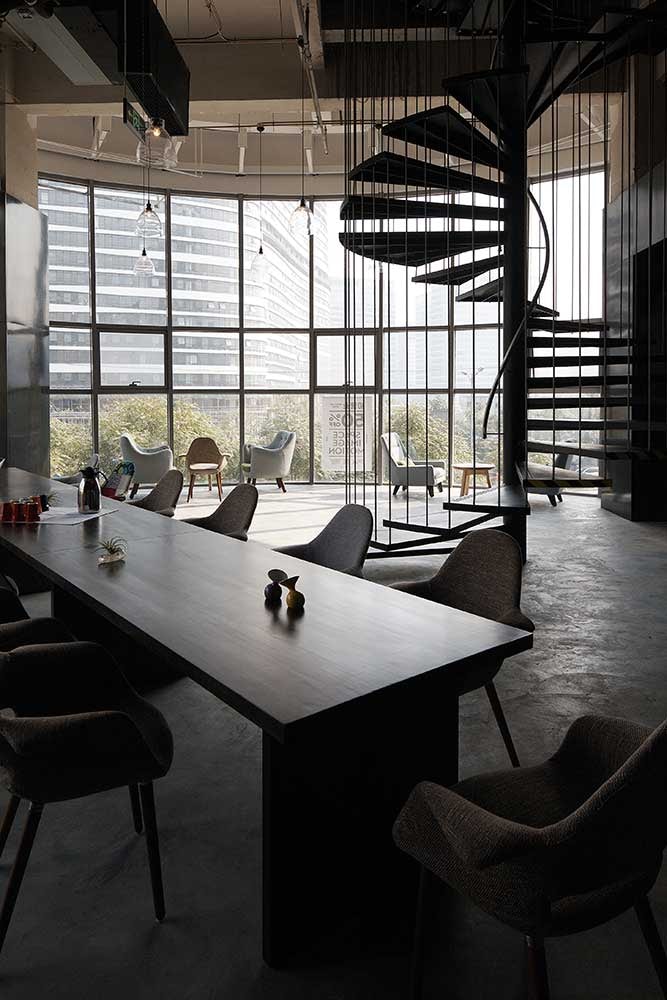
© LATITUDE
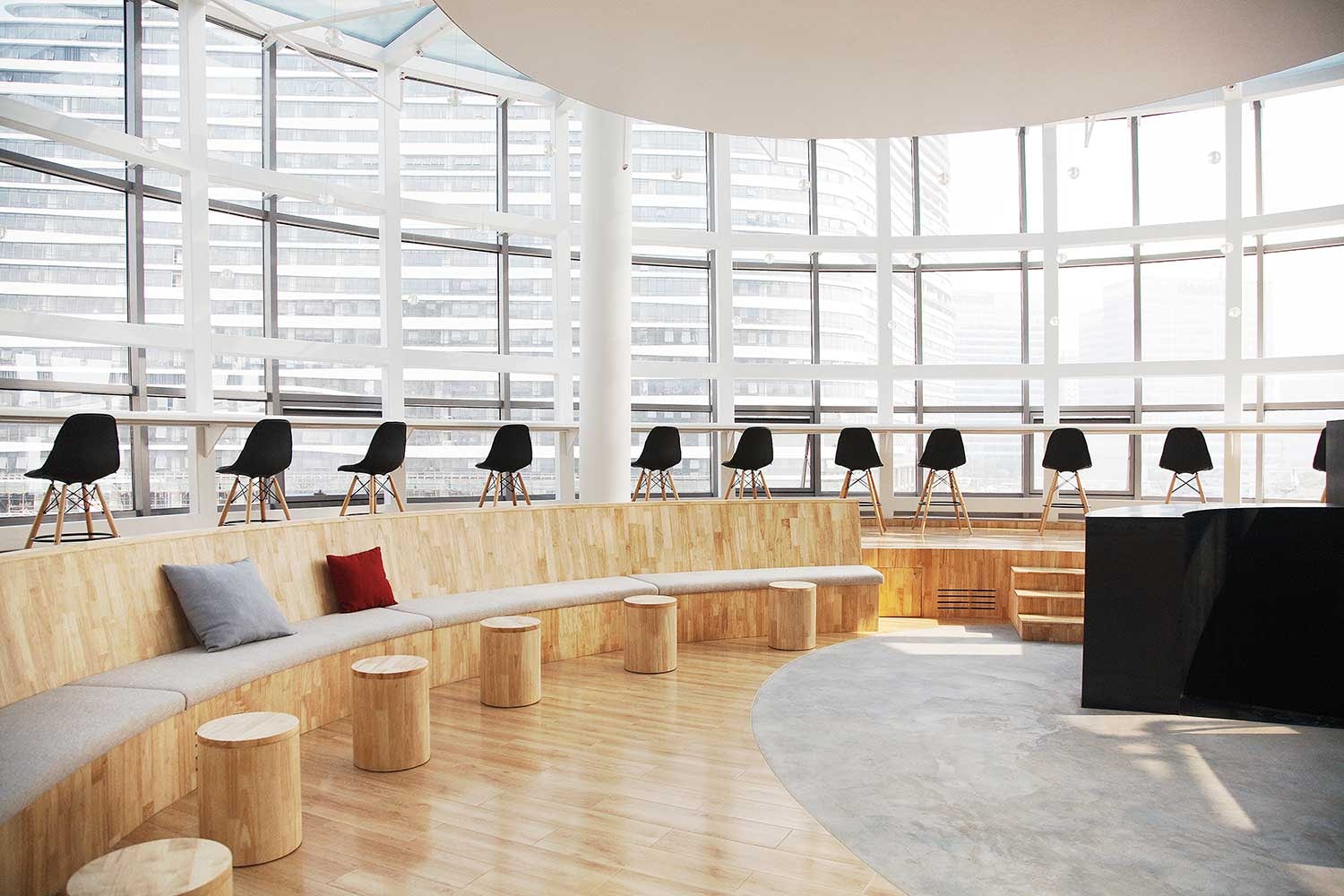
© LATITUDE
CupOne Cafe by LATITUDE, Beijing, China
Organized between two floors, a visitor can choose between two areas: the come-and-go (fast) and the relaxing area (slow). The first is characterized by the use of high tables and chairs next to a service desk wrapped by a light box. The second space is designed with low tables and an embedded bench that wraps around both sides of the interior.
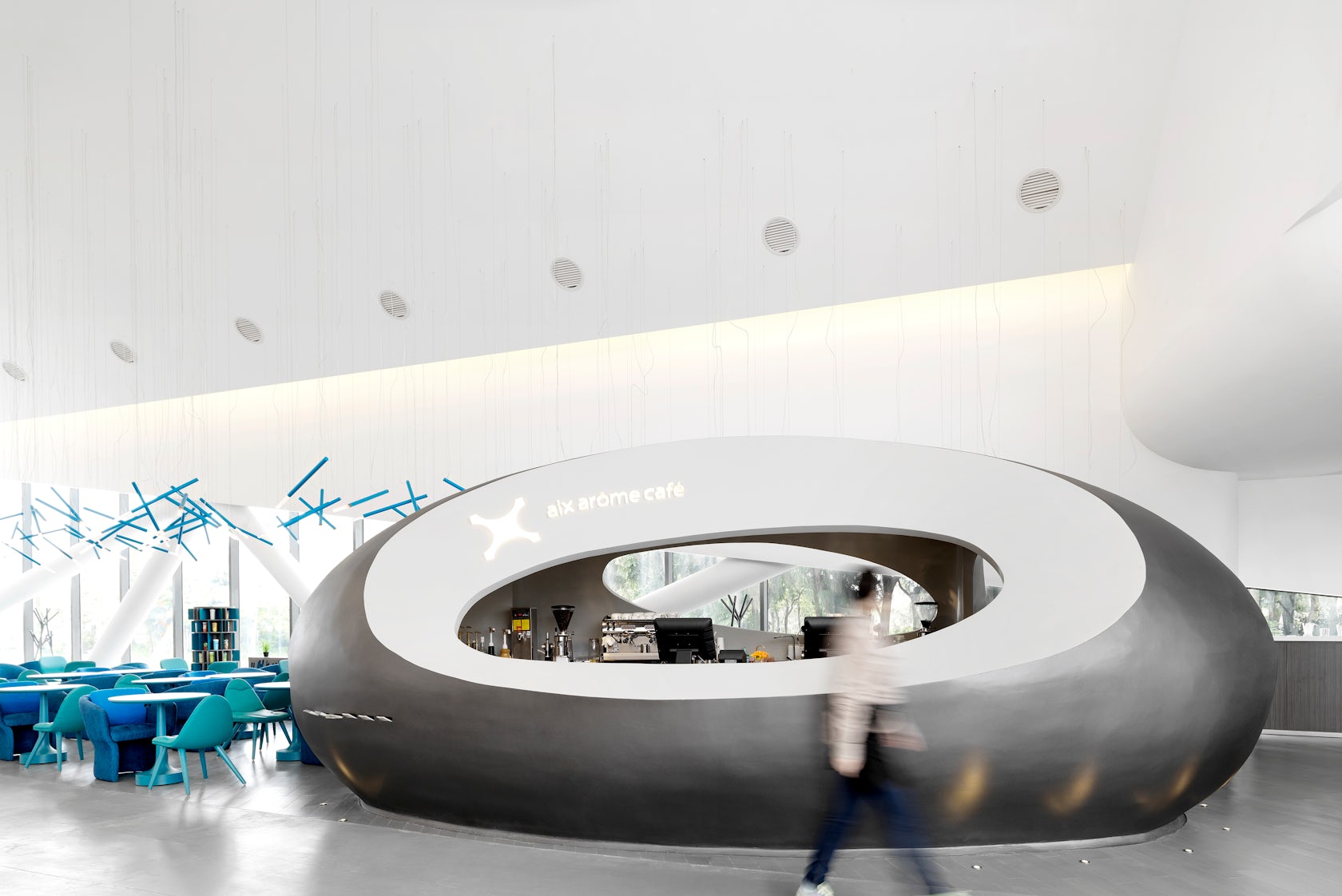
© One Plus Partnership Limited
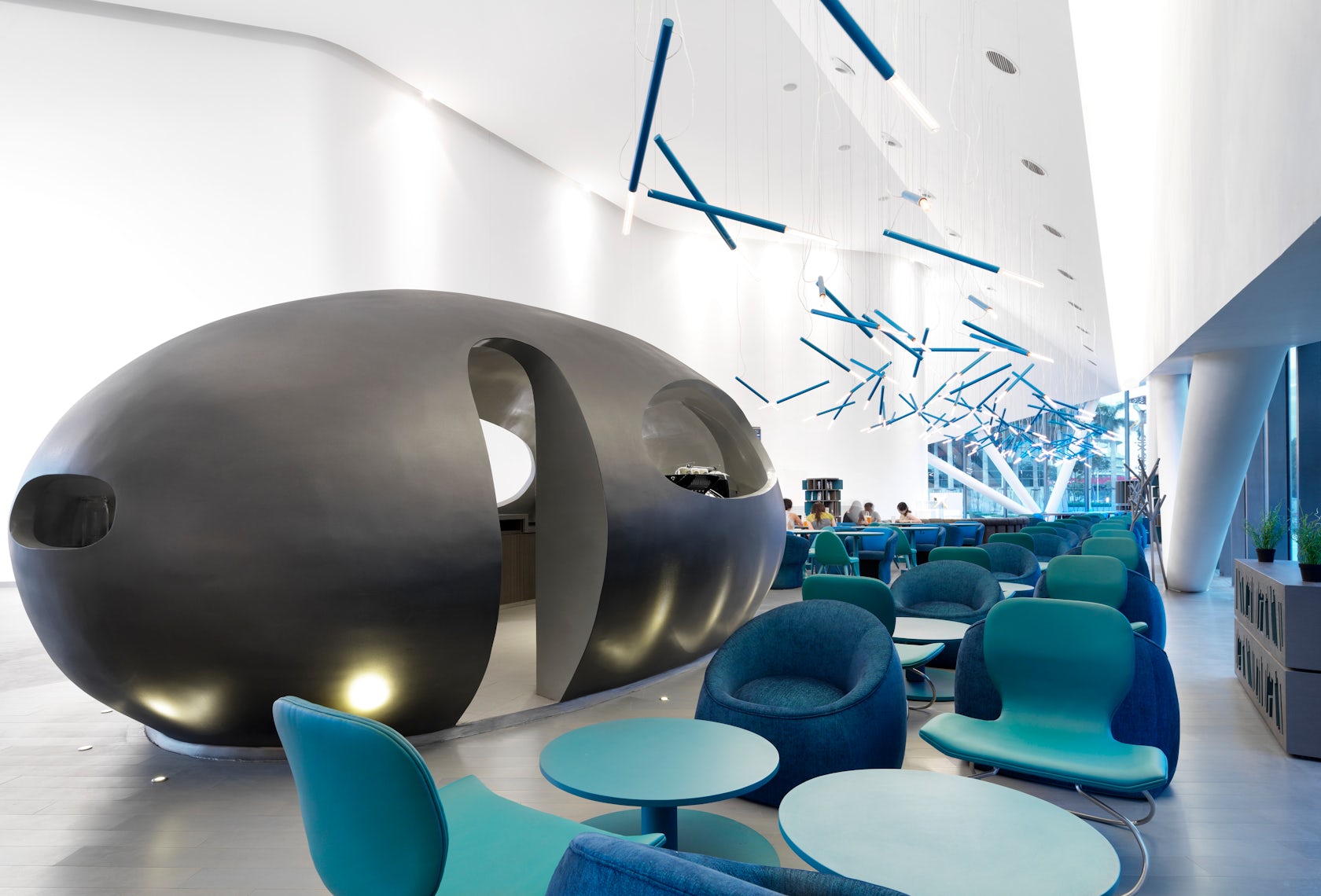
© One Plus Partnership Limited
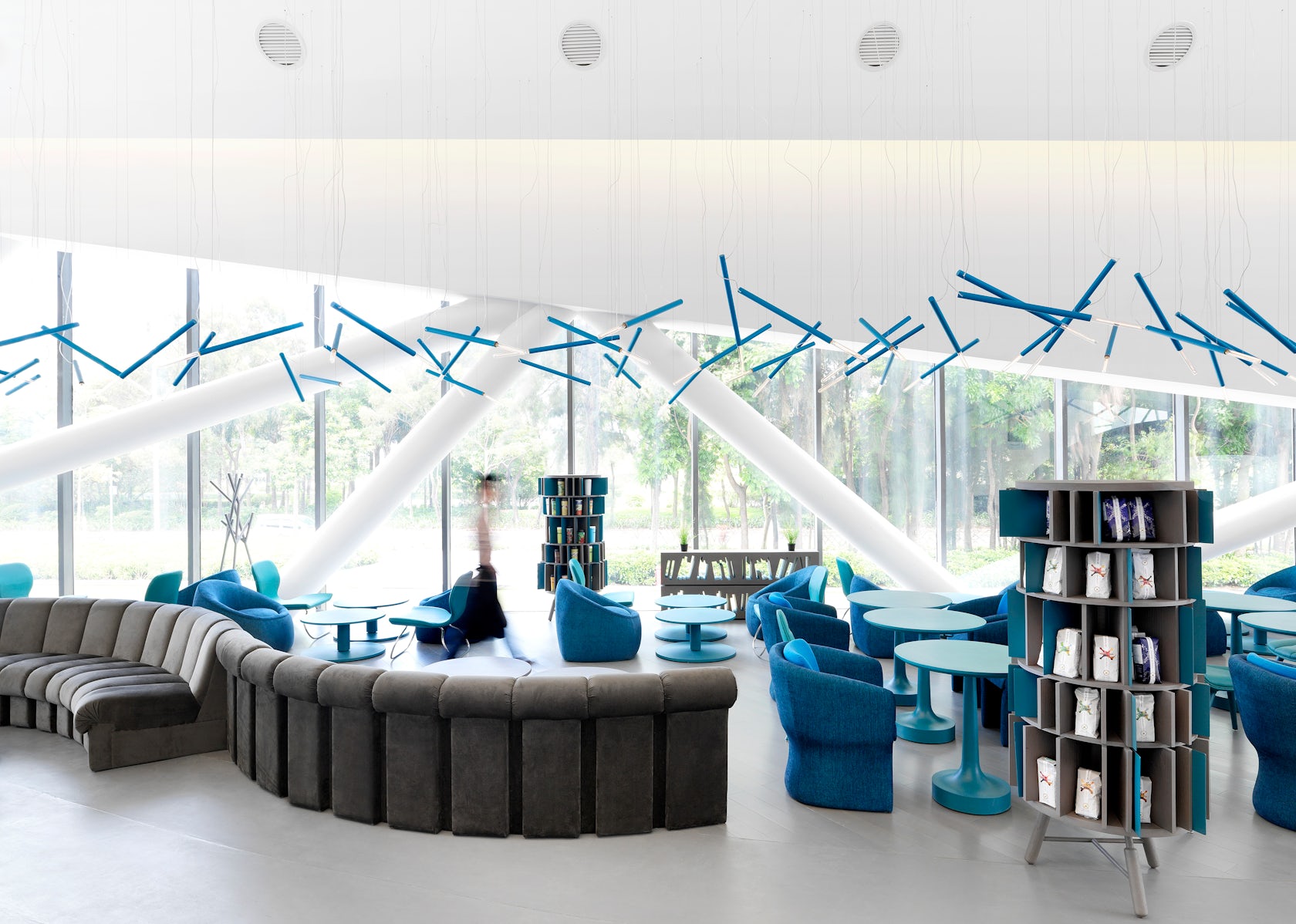
© One Plus Partnership Limited
AIX Arome Cafe by One Plus Partnership Ltd, Shenzhen, China
Situated in the Shenzhen Bay OCT Harbor Theme Park, a huge coffee-bean-shaped structure simultaneously houses the cash wrap and the coffee-making apparatus. The seemingly random hanging chandeliers were designed and positioned to resemble the perspective of fish looking up through the ocean to the water’s surface.

